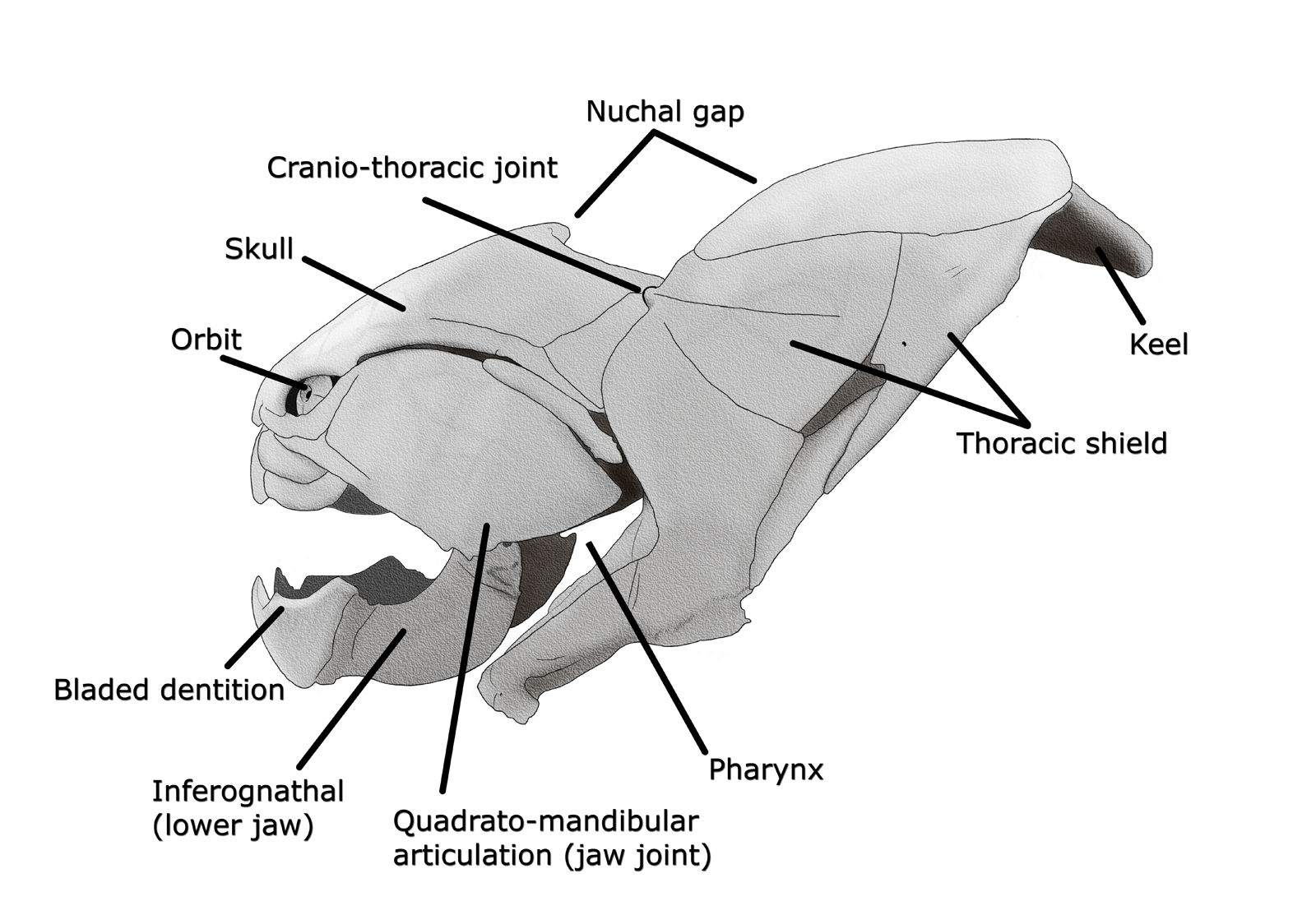Form and Function
Dunkleosteus terrelli was a placoderm, which is an extinct group of vertebrate fishes, existing during the Late Devonian Period. This fish was around 33 feet long and weighed about 4.6 tons (Encyclopedia of Life, 2012). D. terrelli was possibly one of the largest placoderms to have lived during this period (Anderson, 2007). An organism that is the closest living relative to this armored predator is a lamprey, even though they don't have much in common directly. However, these unique fish had a coat of armor surrounding there head and a portion of their thorax, which serves as a type of “exoskeleton” for them. Additionally, there are two pairs of bones along the sides of the D. terrelli's body, a dorsal and a lateral set, that aid in movement for this fish. It may also be possible that D. terrelli could be part of the cartilaginous fish family due to the lack of an endoskeleton (Carr, 2008).
The adaptations on the head of this fish allows for intense biting through other organisms because of its extremely strong bladed jaw (Carr, 2008). Research shows that the head of Dunkleousteus terrelli consisted of four parts which allowed the rate of jaw depression to be more rapid (Anderson & Westneat, 2007). This combination of bones in addition to adductor muscles in the jaw, allowed for the increased bite force on D. terrelli's prey. Refer to the figure below for a reference of D. terrelli's jaw structure. Furthermore, it was possible that the jaw of Dunkleosteus terrelli could snap shut up to five tonnes, making it able to prey on organisms much larger than itself (Williams, 2007). This jaw could show that these fish were one of the first to use rapid jaw motions to ingest there food. In research done by Eric Snively, Philip Anderson, and Michael Ryan they hypothesised that young Dunkleosteu terrelli had lower bite stress for the specific length of the jaw than in adults. The juvinials lower bite stress allows these researchers to conclude that D. terrelli was able to adapt so that they had a higher bite force as an adult (Snively et al., 2009)
The adaption of a jaw like this could be due to the natural habitat that D.terrelli lived in at one time. Refer to our interactions to learn more about what D. terrelli ate and our habitat page for more of on then enviornment this organism lived in. Dunkleosteus terrelli is known to have a very powerful jaw and possibly the most powerful jaw at this time. Also it is predicted that it had a bite force up to 4414 N on the anterior and 5363 N on the posterior blade. (Anderson & Westneat, 2007).
Also adaptations have been developed in D. terrelli's pectoral and caudal fins that allows for more efficient movement through the water. Researchers haven’t found much on the types of tissues these fins were composed of because there has been limited findings on them. They were thought to have a body structure and fins similar to sharks, like the length and size of the fins. Look at the how a predator such as the great white shark of today looks and adapted to compared to D. terrelli's adaptaions. However, the pectoral fins are still undetermined for the size and structure. Many of the adaptation of Dunkleosteus terrelli are unknown because this species is extinct but the inferences that have been made are valid based on the evidence that has been found requarding organisms that are closely related (Carr, 2008).
Want to learn how the Dunkleosteus terrelli might have reproduced? Visit our Reproduction page to find out!
